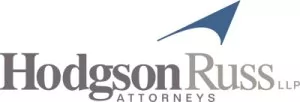The NYS Department of Taxation and Finance issued a new advisory opinion today concluding that a contractor installing a new floor for a tenant at JFK Airport can purchase glue tax free because the glue becomes an "integral component part" of real property owned by an exempt entity. JFK Airport is owned by the Port Authority of New York and New Jersey.
On its face, this advisory opinion1 may not seem that remarkable. It is consistent with the conclusion in a similar advisory opinion from 2008 dealing with repairs and maintenance at JFK's JetBlue terminal.2 In that opinion, the state concluded that, while a contractor's repair and maintenance charges to the tenant are taxable (included amounts attributable to materials), the purchase of materials by the tenant that will become an "integral component part" of the terminal qualified for an exemption.3 In the new advisory opinion, the state concluded that because the terminal is owned by the Port Authority (an exempt entity) and because the glue in question will be integrated into the Port Authority's property by bonding ceramic tiles to the floor, the exemption for items purchased to be integral components of real property owned by an exempt entity applied.
While superficially mundane, these advisory opinions become interesting when considered in conjunction with other authority involving the capital improvement exclusion. Charges by contractors for capital improvements to real property are not subject to sales tax.4 In order to qualify as a capital improvement, the addition or alteration to real property must:
- substantially add to the value of the real property, or appreciably prolong the useful life of the real property, and
- become part of the real property or be permanently affixed to the real property so that removal would cause material damage to the property or article itself, and
- be intended to become a permanent installation.5
This last prong has tripped up sundry leasehold tenants. The issue arises because NYS auditors take the position that certain leasehold improvements fail this "permanence" prong because many lease agreements require the tenants to return the premises to their original condition upon termination of the lease.6 If, the auditors reason, the improvements have to be removed at the end of the lease term, how can they possibly be "intended to become a permanent installation"? Many leasehold tenants have been saddled with a hefty tax bill on improvements that would otherwise easily qualify as capital improvements had the tenant owned the property.
Practice Point: negotiating a simple change to the lease language that causes any tenant improvements to become the property of the lessor, either upon installation or at the end of the lease term, effectively dispatches this issue.
So why is this relevant to the advisory opinions discussed above? Well, the capital improvement exemption and the exemption for improvements to property owned by tax exempt entities contain similar language and concepts. For example, the phrase "integral component part" is relevant to both exemptions.7 Moreover, in past rulings both the Tax Department and state courts have likened "integral component" to "capital improvement".8
Yet, in this new advisory opinion the Tax Department does not appear concerned about the lease terms governing the property. To be clear, the term "integral component part" is not defined anywhere in statute or regulation and the exemption for exempt-entity-owned property contains no explicit requirement that the improvement "be intended to become a permanent installation" as there is with the capital improvement exemption. But one might ask, how could the material qualify as an "integral component part of real property owned by an exempt entity" if the tenant is obligated to remove the property at the conclusion of the lease. Indeed, in the 2008 JetBlue advisory opinion, the Tax Department seemed concerned with this very issue when it conspicuously noted that "[t]itle to all construction work vests in the city of New York when the property is erected, constructed, or installed or otherwise becomes part of the premises." And in at least one other advisory opinion, the fact that title to equipment that was installed on the government-owned property remained with the tenant invalidated the exemption.9
Does this new advisory opinion mean that the Tax Department is moving away from a "permanency test" when analyzing real property improvements for exempt entities? If this ends up being the case, is the Tax Department holding exempt entities (including governmental entities) to a less stringent standard? Only time will tell. And when it does, you can rest assured that we'll comment on it here.
Footnotes
1 TSB-A-20(17)S (June 9, 2020).
2 JetBlue Airways Corporation, TSB-A-08(44)S (Oct. 3, 2008).
3 See Tax Law §§ 1115(a)(15), (16); 20 NYCRR §§ 528.16(a)(2), 528.17, 541.1(e), 541.3(d)(2)(i).
4 N.Y. Tax Law §§1101(b)(9)(i), 1105(c)(3), 1115(a)(17); NYCRR 20 §§ 541.2(g), 541.5(b).
5 NYCRR 20 § 541.2(g)(1).
6 See TSB-M-83(17)S (June 15, 1983).
7 Compare N.Y. Tax Law §§ 1115(a)(15), (16), (17).
8 See, Building Contractors Association, Inc., v. Tully, 449 NYS2d 547 (3d Dept. 1982)(concurring opinion); TSB-A-10(42)S (09/22/2010).
9 Conti Enterprises, Inc., TSB-A-05(35)S (Sept. 27, 2005), see also E. E. Root & Sons, Inc. TSB-A-05(30)S (Aug. 1, 2005).
The content of this article is intended to provide a general guide to the subject matter. Specialist advice should be sought about your specific circumstances.

